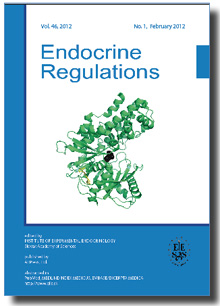Endocrine Regulations Vol.39, p.97-105, 2005
|
| Title: OXYTOCIN – ANATOMY AND FUNCTIONAL ASSIGNMENTS: A MINIREVIEW |
| Author: ALEXANDER KISS, JENS D. MIKKELSEN |
|
Abstract: Oxytocin (OXY) is a very abundant neuropeptide exerting a wide spectrum of central and peripheral effects as neurohormone, neurotransmitter, or neuromodulator. In the central nervous system (CNS), the OXY gene is predominantly expressed in magnocellular neurons in the hypothalamic paraventricular (PVN) and supraoptic (SON) nuclei. The magnocellular OXY neurons release their products into the general circulation in the neurohypophysis while the mediocellular OXY neurons secrete elsewhere in the CNS. OXY is also produced in peripheral tissues, e.g., uterus, placenta, amnion, corpus luteum, testis, and heart. OXY is a potent stimulator of spontaneous erections in rats and is involved in ejaculation. The typical actions of peripheral OXY are stimulation of uterine smooth muscle contraction during labor and milk ejection during lactation. OXY acts via the receptor which is a typical class of I G protein-coupled receptor. OXY receptors have also been identified in other tissues, including the kidney, heart, thymus, pancreas, and adipocytes. For details see .
|
|
| Keywords: Oxytocin – Anatomy – Function – Minireview |
| Year: 2005, Volume: 39, Issue: 3 |
Page From: 97, Page To: 105 |
|
|
|
|
Price:
16.20 €
|
|
|
|
|
|
|
|

